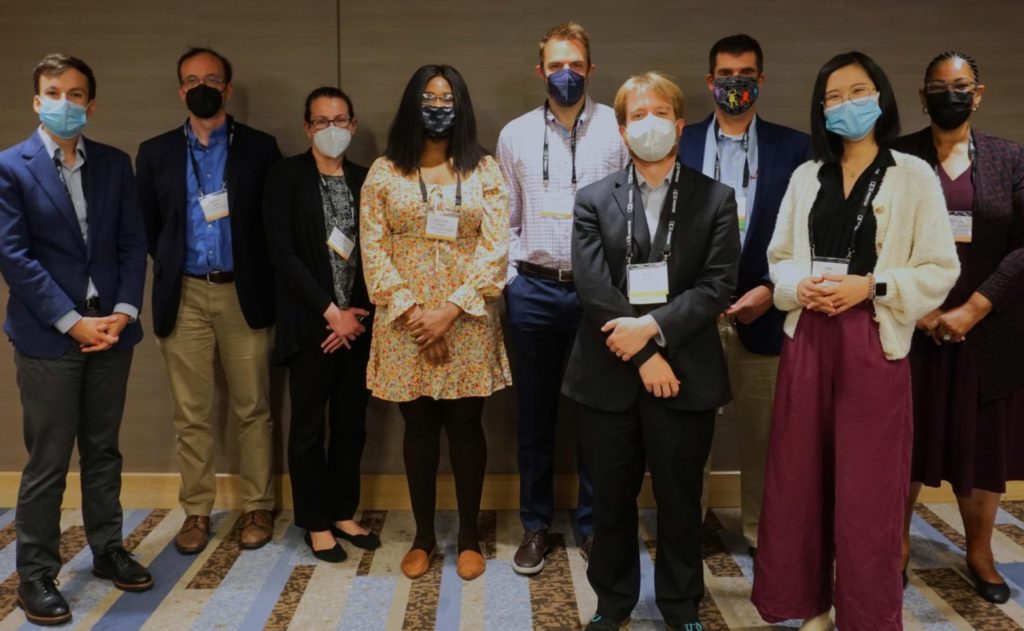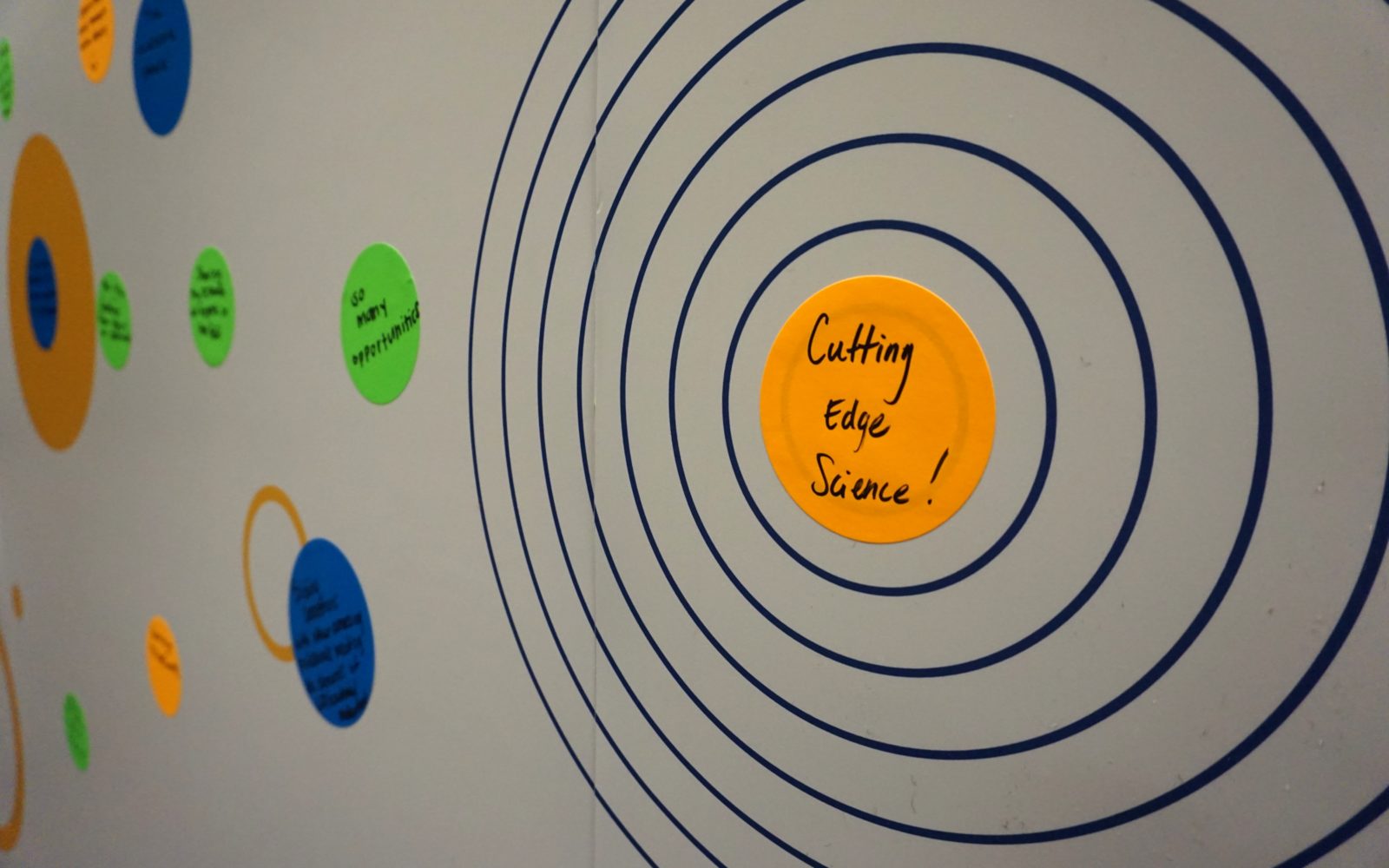The workplace has seen dramatic changes since March 2020, and so has the workforce. In a preconference workshop at the 2022 APS Annual Convention, an interdisciplinary program of speakers convened to share research on the COVID-19 pandemic from a variety of perspectives, including big-data analyses, research methodologies, individual differences, and group inequities related to jobs, well-being, and social status.
The preconference workshop was held under the auspices of the APS Global Collaboration on COVID-19. The leader of the collaboration’s group on work and COVID-19, Adrienne R. Carter-Sowell (The University of Oklahoma), chaired the workshop.
Bart Hobijn, an economist at Arizona State University, argued that the pandemic has not so much transformed the U.S. labor supply as shined a different light on it. For instance, the so-called “Great Resignation” largely reflected cyclical responses that were present in previous recessions but were outsized because of the nature of the pandemic.
The pandemic disproportionately affected blue-collar workers, who represent the majority of the U.S. workforce, Hobijn said. Similarly, COVID-19’s longstanding impact on the labor market—including forcing many individuals to take disability leave because of long-term effects of the virus—presumably disproportionately affects individuals whose jobs cannot be performed remotely and those of lower socioeconomic status.
Hobijn suggested keeping an eye on the long-term health and disability impacts of the pandemic, including lost hours, earnings, and productivity, as well as on the emotional and economic impact of mortality on families.
“Living with the emotional scars of the pandemic—the loss of family members, missing school, the mental health consequences—those give us a variable sense of the impact on productivity, earnings, and the employment rate going forward,” he said.

Kevin Kniffin, assistant professor and director of the Laboratory for Experimental Economics and Decision Research at Cornell University, shared highlights from a recent review in American Psychologist in which he and his coauthors focused on emergent changes for work and moderating factors such as demographic characteristics, individual differences, and organizational norms. Among the concerns brought on by the pandemic is an increase in above-baseline stress and depression.
Regarding emergent changes, Kniffin discussed virtual teamwork, virtual leadership management, and issues related to work–life balance, which have been amplified as more employees work from home. He and colleagues coined the term “mandatory work from home,” reflecting the nuance that although some employees are more productive from home and prefer it, others may face fundamental challenges such as lack of space or missing interaction with others.
Kniffin also discussed the pandemic’s impact on unemployment and inequality, particularly for the many U.S.-based workers who do not have paid sick leave. Noting that simply “moving on” from the pandemic would harm those most disadvantaged by it, he recommended that organizations address inequities that existed before the pandemic.
“The pandemic and related lockdowns created a seismic, blunt-force impact on the world and people’s experiences,” said Kniffin. “It’s also true that there were tremendous disparities that were accelerated on multiple dimensions.”
Lived experiences of working mothers
To understand the strain on working mothers, Lisa Helene Rosen, associate professor and director of the undergraduate psychology program at Texas Woman’s University, and her colleagues began a research project called Mothers Leading the Way. The study used a mixed-methods approach of surveys, focus groups, and interviews with working mothers.
“We strongly believe that solutions to problems are best addressed when the voices of the community are heard, so we sought to elevate the voices of working mothers,” she said.
In the quantitative findings, Rosen and colleagues found that working mothers experienced less role overload (i.e., the perception that the demands of one’s work role exceed personal resources) and more emotional attachment to their workplaces when organizations placed priority on preventing the transmission of COVID-19.
In the qualitative findings, many mothers reported high levels of stress from putting their children’s needs and their work needs above their own, as well as “mom guilt” for not being able to attend to their children’s needs.
Rosen recommended that employers offer flexibility and support groups for working mothers and policies that promote employee health and well-being as a priority.
“Given that these challenges reflect longstanding inequalities, we think it will require concerted efforts to address the difficulties working mothers face during the pandemic,” said Rosen. “We also found mothers calling for training to overcome some of the barriers they faced during the pandemic and saw it as one possible way to restore their mobility within the job market.”
Creating a model of work and suicide
Matt C. Howard, associate professor at University of South Alabama and a 2022 APS Rising Star, discussed work aimed at identifying antecedents to suicide as it relates to the workplace, which he and others explored in the Journal of Organizational Behavior.
The authors identified three direct antecedents—social pain (i.e., thwarted sense of belonging, burdensomeness), psychological pain, and hopelessness. Predictors were type of occupation, unemployment, work relationships, burnout and fatigue, job demands, work–family balance, and substance use.
“It’s important to obtain a better understanding of the relation of work and suicide, especially in the context of the COVID-19 pandemic and after,” said Howard. “We need to understand it—it literally saves lives.”
Howard encouraged I/O psychologists to take greater interest in studying the relation of work and suicide, noting that their perspectives may be missing from research on this important link. For further reading, he and Kayla Follmer coauthored an article published in the Harvard Business Review, “What Employers Need to Know About Suicide Prevention.”
Work’s impact on substance use disorders (SUDs)
Work is one of the best predictors of positive SUD treatment outcomes because it not only provides income but also creates social connection, which is essential to recovery, said Aijia Yao, research program coordinator at Johns Hopkins University. Her research found that two of the most common negative outcomes of COVID-19—financial hardship and unemployment—were strongly correlated with more severe depression and anxiety symptoms among people who entered substance use treatment. This data was collected by clinics nationwide in 2020 at the beginning of the COVID-19 pandemic.
Yao also focused on Black/African Americans and women in her analysis because both groups were overrepresented in frontline occupations such as childcare and health care. Women with SUDs reported overall more severe depression and anxiety compared to men, which might be explained by previous research reporting that women also experienced more pandemic-related distress. The increased depression and anxiety might also be explained by women’s extensive caregiving responsibilities during the pandemic, when routine care arrangements, such as daycare, were mostly unavailable. On the other hand, Black/African Americans reported less anxiety compared to other racial/ethnic groups. It is possible that rooted stigma associated with mental health among Black/African Americans led to this gap, or that their experiences were not captured by the research survey.
These findings suggest that COVID-19 has disproportionately impacted people with low socioeconomic status and jeopardized their mental well-being.
“It is urgent to address and intervene on COVID-19-related financial hardship and unemployment as a part of substance use disorder treatment,” said Yao.
Adjusting to remote work
The final two presentations were by graduate students.
Onyinye Miriam Uwolloh, of Northern Kentucky University, sought to develop a scale of workplace integration to measure the extent to which an employee is happy at work and has a sense of belonging and satisfaction in their professional capacity.
Uwolloh and her coauthors proposed that workgroup integration involves five dimensions: perceived compatibility, connection to leader, communication, appreciation, and recognition of knowledge, skills, and other abilities. Their structure of workgroup integration, assessed in the data collected, partially aligned with that prediction.
“We hope that this scale, or at least the development efforts for the scale, will inform organizations that are seeking to develop interventions to enhance inclusivity and simultaneously promote worker health and well-being,” said Uwolloh.
Nicholas Carruth, of DePaul University, explored how employees adjusted to working remotely, and in particular their psychological well-being, job satisfaction, work-to-family conflict (i.e., problematic spillover of work into the family domain), and family-to-work conflict (i.e., spillover of family life into work).
Adjusting to remote work adversely affected individuals who preferred to keep firm boundaries between work and home life. There was a negative association between these segmentation preferences and job satisfaction—the opposite finding from Carruth and colleagues’ study before the pandemic. These participants also reported more work-to-family and family-to-work conflicts.
“Family interruptions were perceived as one of the most important challenges associated with working from home,” said Carruth.
In concluding, Carter-Sowell acknowledged the unfinished nature of the panel’s work. “I really think the timing of having this conversation here at the convention is a good pivot point where we have some work behind us to reflect on while we’re still not quite sure where we’re going,” she said.
Learn more about the APS Global Collaboration on COVID-19 and register to attend the next webinar, September 8, on how memory impacts the fight against COVID-19.
Related content from APS >
-

2022 APS Annual Convention
APS is in Chicago for the 2022 annual convention. Follow APS (@PsychScience) and the hashtag #apschi22 on Twitter for the latest updates!
-

Snapshots From Chicago: APS’s 2022 Convention Marks the Return of In-Person Science
“An exhausting (but awesome) five days at #apschi22,” as one of the 2,500 attendees tweeted, the event featured a diverse variety of presentations across the major fields of psychological science.
-

APS Global Collaboration on COVID-19
Informing solutions for public health crises through psychological science.
